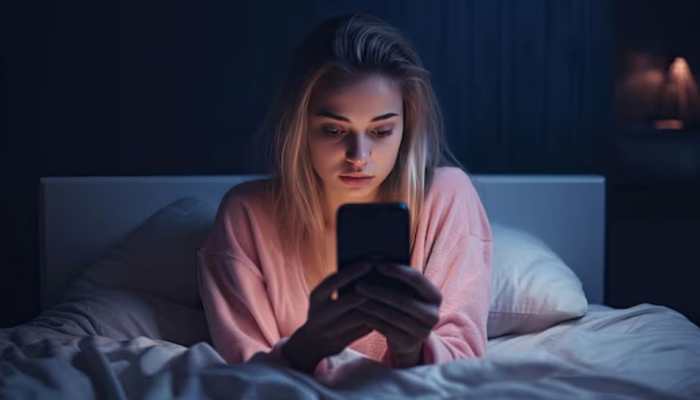Protect Your Eyes From Dim Light Damage: The Hidden Dangers Of Nighttime Social Media Scrolling
Scrolling through social media before bed might seem relaxing, but it could silently harm your eye health. Here’s what you need to know and how to safeguard your vision.
Trending Photos
) Pic Credit: Freepik
Pic Credit: Freepik In today’s digital age, nighttime social media scrolling has become a common habit for many. Whether it’s catching up on Instagram, Facebook, or Twitter, winding down with your phone may feel like second nature. However, this seemingly harmless activity could pose significant risks to your eyes, especially in dim light settings.
Dr. Puneet Jain, Senior Consultant at Sharp Sight Eye Hospitals, highlights the dangers: "The impact of nighttime scrolling goes beyond sleep disruption; it can cause severe eye strain and may lead to long-term vision issues." Here’s a closer look at these risks and practical steps to protect your eyes.
The Blue Light Problem
Digital devices emit blue light, a wavelength known to disrupt sleep by suppressing melatonin, the hormone responsible for regulating your sleep cycle. Blue light tricks your brain into thinking it’s daytime, making it harder to fall asleep after screen exposure at night.
But that’s not all. Prolonged exposure to blue light can lead to digital eye strain, characterized by dryness, irritation, and blurred vision. Studies have also linked blue light to an increased risk of age-related macular degeneration (AMD), a condition that can result in vision loss over time.
Strain in Low-Light Conditions
Using your phone in a dark or dimly lit room forces your eyes to work harder. The contrast between the bright screen and the dark environment causes your pupils to dilate, straining the eye muscles. This phenomenon exacerbates digital eye strain, commonly known as computer vision syndrome.
Symptoms such as headaches, dry eyes, blurred vision, and discomfort are more pronounced in low light. Prolonged exposure can also contribute to nearsightedness (myopia), particularly in younger individuals.
The Flicker Effect
Smartphone screens often flicker at high frequencies, which, though invisible, can still cause headaches and discomfort. While features like blue light filters and night mode settings mitigate some strain, they don’t fully address the flicker issue.
How to Protect Your Eyes
Fortunately, there are effective ways to reduce the risks of nighttime scrolling. Here are some tips to safeguard your vision:
Limit Screen Time Before Bed: Avoid using screens at least one hour before sleep to allow your eyes and brain to relax.
Use Blue Light Filters: Enable blue light filters on your devices or invest in blue light-blocking glasses for additional protection.
Improve Ambient Lighting: Keep your room well-lit when using devices at night to reduce the contrast between the screen and the environment.
Follow the 20-20-20 Rule: Every 20 minutes, look at an object 20 feet away for 20 seconds to relieve eye strain.
Take Regular Breaks: Avoid long, uninterrupted periods of screen usage to give your eyes time to recover.
While scrolling through social media at night might feel relaxing, it’s essential to understand its impact on your eyes. By taking proactive measures like limiting screen time and using blue light filters, you can protect your eye health and ensure better sleep quality.
Stay informed on all the latest news, real-time breaking news updates, and follow all the important headlines in india news and world News on Zee News.
Live Tv







)
)
)
)
)
)
)
)
)
)
